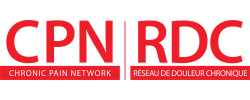| En Français | Return |
Patient Evidence Summary

Doctor, tell me about Hypnosis and Mindful Meditation to treat chronic pain in veterans.
Hypnosis, Mindful Meditation, and pain education all reduced pain intensity for the veterans in this study.
What is the evidence?
SUMMARY OF FINDINGS
Hypnosis vs Mindfulness Meditation vs Pain Education
| Outcome | Time point | Hypnosis | Mindfulness Meditation | Education | Interpretation |
|---|---|---|---|---|---|
| Change in Average Pain Intensity score (API)* | immediately after treatment | Reduced by 0.61 points | Reduced by 0.85 points | Reduced by 0.57 points | All 3 interventions reduced pain by a small amount |
| Change in API score* | 3 months | Reduced by 0.95 points | Reduced by 0.67 points | Reduced by 0.48 points | Hypnosis reduced pain by a little bit more than Mindfulness Meditation or pain education |
| Change in API score* | 6 months | Reduced by 1 point | Reduced by 0.86 points | Reduced by 0.28 points | Hypnosis and Mindfulness Meditation reduced pain a by a little bit more than pain education |
| Proportion of participants with a change in API score of at least 2 points** | immediately after treatment | 12% | 20% | 16% | A similar proportion of participants had a decrease in API of at least 2 with each of the interventions |
*average pain intensity is measured on a scale of 0 to 10 (0= no pain; 10= worst pain imaginable)
**most people would notice this difference
What kind of study was this?
This was a randomized controlled trial.
Who? This study included 328 adult veterans (average age, 53 years; 74% men) who reported average pain intensity of at least 3 (on a scale of 1 to 10) with worst pain intensity of at least 5 (on a scale of 0 to 10) within the past week and had been experiencing pain at least 75% of the time over at a minimum of 3 months.
What? The study compared Hypnosis with Mindfulness Meditation with pain education (control group)
Hypnosis or Mindfulness Meditation | vs | Pain Education (control) |
|---|---|---|
Hypnosis: participants were trained to perform self-hypnosis to enter a state of focused attention that made them more open to suggestions for changing their thoughts and behaviours. Examples of hypnotic suggestions included changing their thoughts about pain, improving their mood, focusing on optimism, relaxation, and sleep. Audio recordings were provided for practice at home. Mindfulness Meditation: participants were trained to observe their thoughts and emotions on a moment-to-moment basis with a non-judgemental attitude. This approach helps to separate emotion from physical sensations and improve pain acceptance. Audio recordings were provided for practice at home. Eight group sessions (3 to 12 participants) were led by health care professionals for 90 minutes per session over 8 to 10 weeks. | Pain education: a combination of teaching sessions and group discussions were used to increase participants' knowledge about chronic pain and improve their skills to cope with pain. Audio recordings were provided for practice at home. Eight group sessions of 3 to 12 participants were led by health care professionals for 90 minutes per session over 8 to 10 weeks. |
Why was this research done?
There is considerable interest in non-drug treatments for pain. Hypnosis uses a state of focused attention to provide suggestions on changing how people respond to pain. Mindfulness Meditation trains people to change their relationship with pain to improve acceptance. The researchers wanted to know if Hypnosis or Mindfulness Meditation was better then pain education at reducing pain intensity in veterans experiencing chronic pain. They found that all 3 interventions reduced pain with no intervention that was consistently better than the others. There was some evidence that the positive effect of Hypnosis and Mindfulness Meditiation may last longer than pain education alone but more research is needed to confirm this finding.
This Evidence Summary is based on the following article:
Williams RM, Day MA, Ehde DM, et al. Effects of hypnosis vs mindfulness meditation vs education on chronic pain intensity and secondary outcomes in veterans: a randomized clinical trial. Pain. 2022 Oct 1;163(10):1905-1918. doi: 10.1097/j.pain.0000000000002586. Epub 2022 Jan 25. PubMed
Published: Thursday, June 1, 2023
Please note that the information contained herein is not to be interpreted as an alternative to medical advice from a professional healthcare provider. If you have any questions about any medical matter, you should consult your professional healthcare providers, and should never delay seeking medical advice, disregard medical advice or discontinue medication based on information provided here.
|
This Evidence Summary was printed from the PAIN+ CPN website on 2025/04/01. To view other Evidence Summaries or to register to receive email notifications about new Evidence Summaries, please visit us at https://www.painpluscpn.ca/Articles/EvidenceSummaries |

|






 , McMaster University
, McMaster University